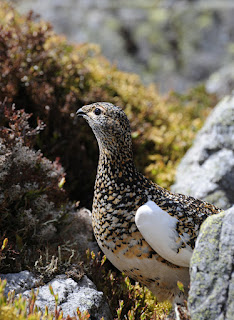Waders
Several species of waders forage on the coral platform, arctic-breeding waders, some of which I am familiar with in their nesting grounds on the tundra. Some like the Ruddy Turnstones and Pacific Golden Plover also feed on the paths and lawns of the resort complex and on the runway.
Other species I saw were Bar-tailed Godwit, Whimbrel, Lesser Sand Plover, and two species of Tattler, Wandering and Grey-tailed.

Wandering Tattler
Grey-tailed Tattler, note white belly and under tail.
When seen separately, the Tattlers are difficult to identify, but when seen together, as I saw these two feeding in the same pool it was more simple. Both birds were coming into their summer breeding plumage with flecked flanks, the Wandering Tattler having flecks right down its belly, while the Grey-tailed had a pale unmarked belly. It also had a brighter white stripe above the eye. However, the main difference was in their behaviour. Both foraged in the water's edge, but the Grey-tailed was far more jerky and jumpy as it fed and although it allowed close approach it was more nervous looking. The Wandering tattler was a slow methodical feeder, casually probing along the shore in a smooth action, it merely looked up quietly when approached.
Wandering tattler, note black and white markings all along the belly and under the tail.

















































